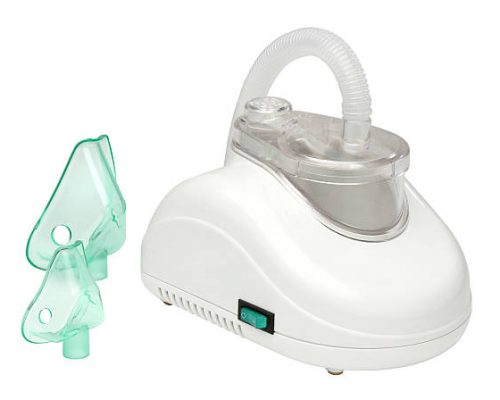Project Report For Nebulizer Machine
Introduction
Project report for Nebulizer Machine is as follows.
A nebulizer is a device that delivers medications that allows medicine to be delivered into the lungs as a mist. These devices force pressurised air through the liquid to create a thin mist that is inhaled through a mouthpiece or mask. These machines are intended to treat asthma, cystic fibrosis, COPD, and other respiratory illnesses.
Nebulizers can use different mechanisms to produce a fine mist of medication. Compressor nebulizers have been around for a long time and employ mechanical pressure to transform liquid medication into a tiny, inhalable mist. Ultrasonic nebulizers are newer and use high frequency vibrations to achieve the same results. The medicine becomes a fine mist and travels through a connected tube to a face mask or mouthpiece, where the patient takes slow, deep breaths to allow the medicine to reach the intended deeper points in the bronchial airways. To finish the nebulizer treatment, most drugs require around 10 minutes of repeated deep breaths.
Nebulized medications are usually administered through a mask. If you are taking some medicines, it is recommended to use a mouthpiece to prevent side effects if the medicine gets into your eyes or skin. A mouthpiece is also the best way to administer the maximum amount of medication. For example, in bronchiectasis most of the saline enters the lungs and mucus is expelled. If you are unsure whether to use a mask or mouthpiece with your nebulizer, check with your doctor.
Portable nebulizers can be powered by batteries or by an automotive outlet. Some are a little bit bigger than a deck of cards and portable in a bag or briefcase. Nebulizers might need a prescription from a doctor. Also available at your child’s pediatrician’s office. Also, a lot of people get respiratory care in clinics. A nebulizer delivers liquid medication via compressed air. People with asthma usually use both nebulizers and inhalers, but nebulizers may be easier to use, especially in young children who may not have proper inhaler skills.

Types Of Nebulizer Machine
- Ultrasonic Nebulizer :- Ultrasonic nebulizers use ultrasonic sound waves that are directly delivered into the liquid to create an aerosol. The waves create tiny droplets of medicine that can be easily inhaled using a mask or mouthpiece. The aerosol is produced by incredibly small droplets that penetrate deep into the lungs. Because ultrasonic nebulizers do not require any airflow, they do not require the use of a compressor, which lowers noise.
- Jet Nebulizer :- Compressed air is used by a compressor nebulizer to deliver vaporised medicine to the mask or mouthpiece. Compressor nebulizers require a power source to generate compressed air, hence they are mainly limited to home use. Some versions, however, may be charged via a car charging plug or a portable battery.
- Mesh Nebulizer :- Mesh nebulizers use a vibrating device to force medication through mesh, resulting in thousands of aerosolized droplets for simple inhalation using a mask or mouthpiece. Using this sort of nebulizer allows the drug to go deeper into the lungs, resulting in more effective treatment. Mesh nebulizers are lightweight, portable, and simple to operate. They are the preferred nebulizers for youngsters and the elderly.
Project Report Sample On
Nebulizer Machine
Get Completely Custom Bankable Project Report
Market Potential Of Nebulizer Machine
The size of the worldwide nebulizer market was evaluated at USD 1.07 billion in 2022, and it is projected to rise at a CAGR of 5.9% from 2023 to 2030.
The high growth has been attributed to the increasing incidence of chronic respiratory diseases. Growing demand for home medical equipment and an increasingly elderly population. According to the Centers for Disease Control and Prevention, chronic obstructive pulmonary disease (COPD) is the fourth most common cause of mortality in the country.
In addition, increased consumption of ultra-processed products such as alcohol, tobacco, and sugar-sweetened beverages has significantly contributed to the increased prevalence of respiratory diseases in North America. According to the Centers for Disease Control and Prevention (CDC), tobacco use is responsible for about 14% of deaths among adults aged 30 to 70 in North America. Therefore, the increasing number of smokers and environmental pollution is expected to increase the demand for atomizers.
The nebulizer and ventilator market is very mature, with jets dominating the market due to their low cost. Therefore, other nebulizer devices are expected to face stiff competition. Moreover, it is difficult for new technologies and devices to gain momentum in mature markets. Especially given the complexity of the various reimbursement and national regulatory regimes that must be followed for both medicines and devices.
The nebulizer and respiratory device industry is relatively established, with jets dominating due to their low cost. As a result, additional nebulization devices are projected to face stiff competition. Furthermore, it can be tricky for new technologies or devices to acquire traction in established markets, especially given the complexities of varied reimbursement and national regulatory systems that must be followed for both medications and devices.

